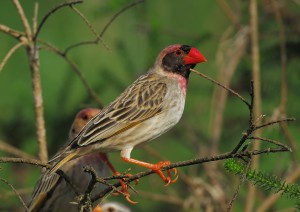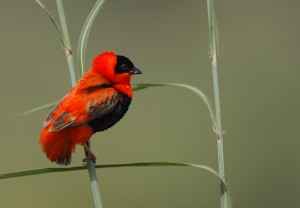Week 59 – 27 August 2017:
With Remarkable Insight
The first ever issue of The Ostrich was released in March of 1930. A publication of the South African Ornithological Society, it was to be the repository of important findings about birds in Africa. That first issue included a list of fifty-four persons who had indicated their intention to support the society. Among those persons were folks with such grand names as Commander Talbot Ponsonby, Colonel Sir Llewellyn Anderson and Captain Guy C. Shortridge.
Now in its 88th year, the latest issue of Ostrich contains papers including “Habitat preference of the eastern population of the Short-clawed Lark Certhilauda chuana in the Limpopo province, South Africa” and “Is the Black Harrier Circus maurus a specialist predator?” As important as these new publications are, I believe that there is also value in looking back to works from a bygone era.
Ambrose Austin Lane was one of those who indicated his support of the South African Ornithological Society in 1930. Born in Ireland in 1868, he was a farmer in the Potcherfstroom district of South Africa until his death in 1936. Lane was a nature enthusiast, and was a founding member of the South African Biological Society in 1916. Land also contributed a work to the first issue of The Ostrich entitled “Some notes on weavers and widow-birds.”
In that publication, Lane described aspects of the breeding biology of the Pink-billed Weaver, Quelea sanguinirostris. Modern guides do not recognize a species by that name, but it seems likely that Lane was referring to the Red-billed Quelea, Quelea quelea. He described the voices of thousands of these weavers as “reminding one of the rythmic (sic) cadence of some lively stream flowing swiftly over a pebbly course.” Lane also explained that the nests of these weavers were composed of long needles taken from Beefwood trees. The needles were not well suited for the task, as “the first strong breeze usually brought the flimsy structure to the ground.”
Lane also described the lives of birds now called Red Bishops, Euplectus orix. Cold weather caused Red Bishops to abandon their breeding grounds, and to “gather in flocks on the warmer part of the highveld… where they feed on the open ground, probably on grass and other seeds that are plentiful.” These sorts of observations were quite common in the early ornithological literature. Papers considered the natural history of birds, without adopting a scientific approach.
Lane’s 1930 publication was different; it went a step beyond the ordinary. He pointed out that South Africa was going through an agricultural revolution, as had already been seen in North America. Native habitats were being transformed into agricultural land. “Original species may be gradually exterminated and be replaced by quite different species,” Lane wrote, “which may lead to variations in type, habits or migratory range and would be interesting to follow.” He suggested that “respected members of the South African Ornithological Society by their cooperation can do much to throw light upon the life histories of birds under the changes that are taking place.”
Ambrose Austin Lane was, of course, completely correct. Observations made by many persons can reveal things that an individual or small group could not hope to. His words were also prophetic. The observations of many over a period of decades are starting to reveal changes in the lives of birds brought about by human-created global climate change.
Lane, A. A. 1930. Some notes on weavers and widow-birds. Ostrich 1:22-24.
Photo credits: Red-billed Quelea, © Lee Ouzman – www.astrocape.org.za; Red Bishop, © Steve Garvie – www.flickr.com



